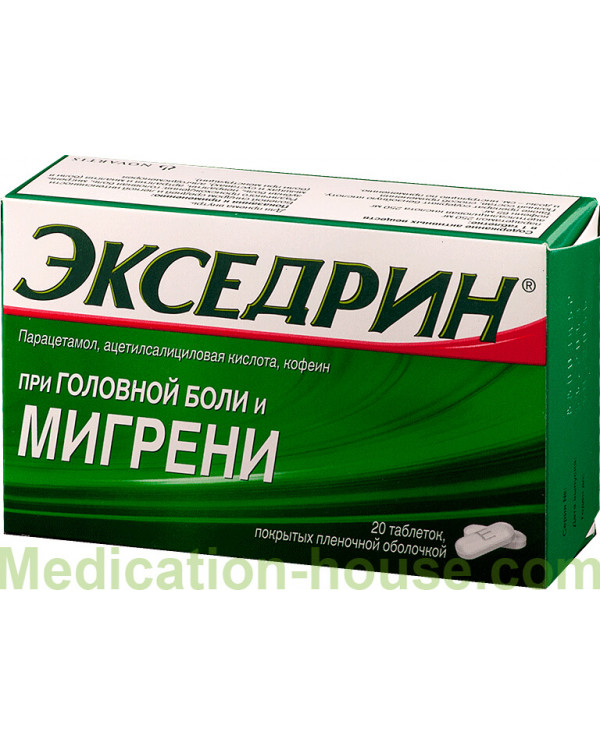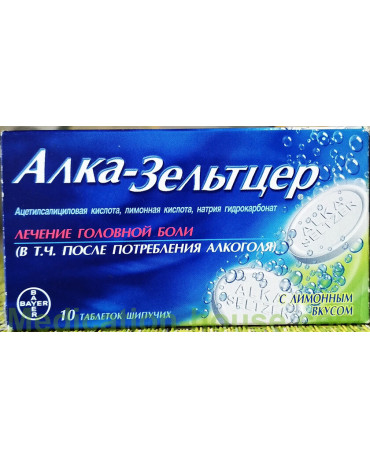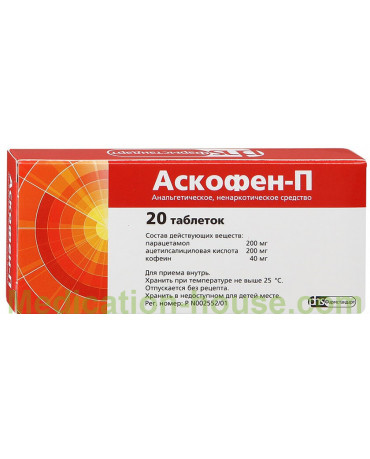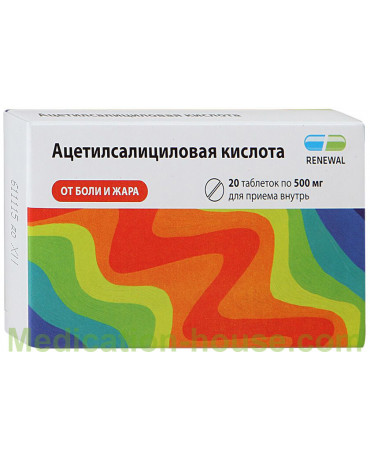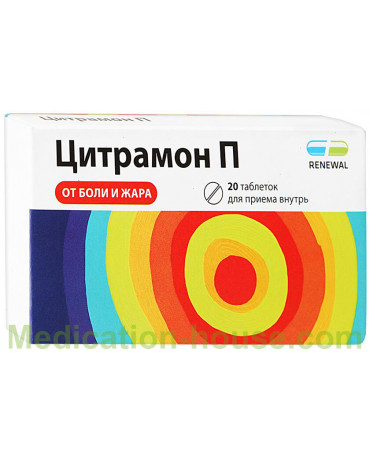Excedrin user manual
Reed more and buy Excedrin on this page
Drug description
The drug is a combination of three active substances - caffeine, paracetamol and aspirin. Paracetamol helps reduce pain, get rid of high fever and has a weak anti-inflammatory effect. Caffeine dilates blood vessels, increases the activity of signal transmission of neural circuits and reduces the generation of platelets, thinning the blood.
With excess consumption of paracetamol, its metabolites accumulate in the liver.
Aspirin is needed in this bundle to mutually enhance the effect of paracetamol. It quickly relieves pain, especially if it is caused by inflammatory processes.
In addition, it helps to improve blood flow in the capillaries in the focus of pain. This happens, among other things, due to the oppression of the formation of blood clots.
The three components of Excedrin work to normalize slow blood flow and reduce its thickness.
Excedrin is an elongated, white pill. Each of them is covered with a shell, on one side of the tablet the letter “E” is engraved. On a section the middle is white or of a very light shade. In addition to the active ingredients, the composition includes auxiliary: microcrystalline cellulose, hyprolose and stearic acid.
Pharmacokinetic properties
Thanks to a combination of three active ingredients, the drug not only quickly stops the pain, but also has a fairly long-lasting effect on the body. This helps prevent the rapid return of pain. All of the active components of Excedrin are distributed and derived a little differently:
Paracetamol. Absorbed in the gastrointestinal tract, the highest concentration in the blood reaches in the range from 30 to 120 minutes after administration. It is broken down in the liver and excreted through the urinary system. A small amount of it remains unchanged, the rest is decomposition products. The duration of the most active impact is from an hour to two.
Aspirin. As well as paracetamol, it is absorbed in the gastrointestinal tract, and then enters the circulatory system. The half-life is only up to 20 minutes, as this compound is quickly cleaved by special enzymes. The maximum possible amount of acetylsalicylic acid after administration is in the blood after one and a half to two hours after administration. It is metabolized in the liver, kidneys and excreted through the urinary system.
Caffeine. It enters the blood both through the mucous membrane of the stomach and the large intestine. The greatest amount in the blood is observed in the range from five minutes to one and a half hours, depending on the individual characteristics. The body processes caffeine in the liver into simpler compounds, and then transports the decay products to the kidneys. About a tenth of the total caffeine consumed remains unchanged until removal from the body.
It must be borne in mind that all three substances with an overdose adversely affect the body. Paracetamol and acetylsalicylic acid tend to accumulate in the liver. Caffeine, which has a tonic effect with a small dose of intake, inhibits the nervous system if it is consumed too much. Based on this, you need to strictly observe the maximum daily dose of Excedrin.
Indications
The scope of the drug - pain relief for violations of the body. The range at which helps Excedrin: from pain during menstruation to migraines. The most accurate list of indications for use:
headache;
migraine attacks;
toothache;
neuralgia;
pains in muscles, joints;
pain during or before the menstrual cycle.
Due to the combination of active ingredients, Excedrin quickly copes with pain syndromes. However, potent substances have contraindications for use and a number of side effects. Before using Excedrin, you need to understand whether you can take it in a particular case.
Contraindications
Individual intolerance to one or more components of the drug will be a direct ban on its use. Otherwise, contraindications include a combination of obstacles to the use of all three active ingredients.
Excedrin is contraindicated in:
erosive, ulcerative lesions of the stomach, esophagus or intestines;
bleeding in the gastrointestinal tract;
surgeries (due to blood thinning);
incoherent blood;
hemorrhagic type of diathesis;
hypoprothrombinemia (insufficient amount of prothrombin, weak platelet synthesis);
significant portal hypertension;
coronary heart disease in severe form;
glaucoma;
pronounced lack of potassium;
dysfunctional disorders of the kidneys and liver;
less than 15 years old;
pregnancy or lactation;
the simultaneous reception of products containing one or more of the active ingredients Excedrin;
increased excitability, sleep problems.
To ensure safety, you should carefully take Excedrin in combination with other drugs that have antipyretic and analgesic properties. Controlled reception is recommended for gout and arthritis, headache associated with injury.
In pregnancy, Excedrin is not prescribed.
Acetylsalicylic acid can be taken from the second trimester of pregnancy, under the supervision of a specialist. However, the effect on the body of a woman and the unborn child from taking Excedrin has not been studied. Given the lack of data on the effects of a combination of active substances during pregnancy, the drug should not be taken in order to avoid possible harm to health.
Side effects of taking
According to the instructions, Excedrin can cause a number of side effects. If symptoms occur, you should refuse to take the drug. The sooner the drug is replaced, the easier it will be to get rid of the effects of side effects.
When you receive pain from the stomach and pelvis, nausea or vomiting may occur. If the liver or kidneys poorly perform their functions due to the characteristics of the body or illness, a toxic damage is possible.
Receiving on an empty stomach, with peptic ulcers, gastritis or a tendency to high acidity may provoke erosive lesions of the gastrointestinal mucosa.
Excedrin can cause allergic reactions, bronchospasm, rash on the skin.
On the part of the cardiovascular system, side effects are manifested by tachycardia, increased blood pressure. If the patient is prone to increased pressure, Excedrin will adversely affect his condition. The same can be said about heart rhythm disorders, caffeine is contraindicated for such problems.
Instructions for use
Excedrin should be taken during or after a meal, but not on an empty stomach. For the relief of migraine, at the first symptoms you can take two pills. The average daily dose is up to three tablets of Excedrin, a day can not take more than six pieces. An overdose of the drug will have negative short-term and long-term effects.
The drug can not be taken more than five days in a row with pain syndrome and more than three days with migraines.
Adults and adolescents are recommended to take the medicine no more than once every 4 hours. Headache and pain of moderate severity usually disappear within 15 minutes after administration.
From the indisposition of a migraine, the drug is able to save in half an hour.
Triple Headache Kick
Most often, analgesics are taken when a headache. Most often this occurs due to improper posture, a passive lifestyle, vascular and capillary diseases, and poor nutrition. When using strong painkillers, to which Excedrin belongs, it is necessary to understand that with its help symptoms, but not the cause of pain, are relieved.
Excedrin copes with the most difficult pain syndromes, including migraine. Anyone who has ever experienced an attack of this disease knows how important it is to have a suitable remedy at hand. The drug will help not be distracted by the pain and live a full life.
Excedrin fits almost perfectly to reduce pain, it consists of three time-tested substances. They quickly and effectively remove the discomfort, and in combination their action becomes much longer.
Terms of sell
You can buy Excedrin without a prescription.

